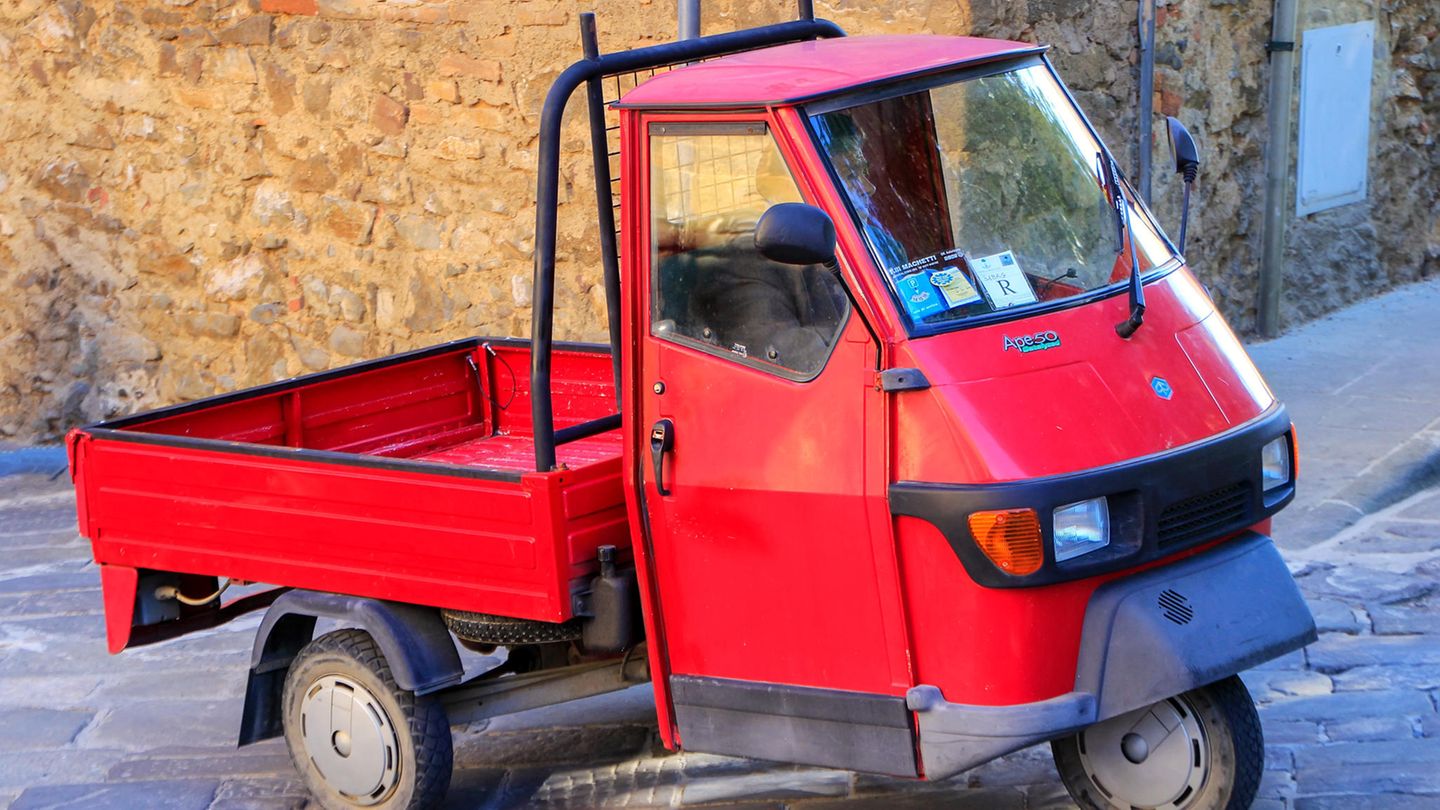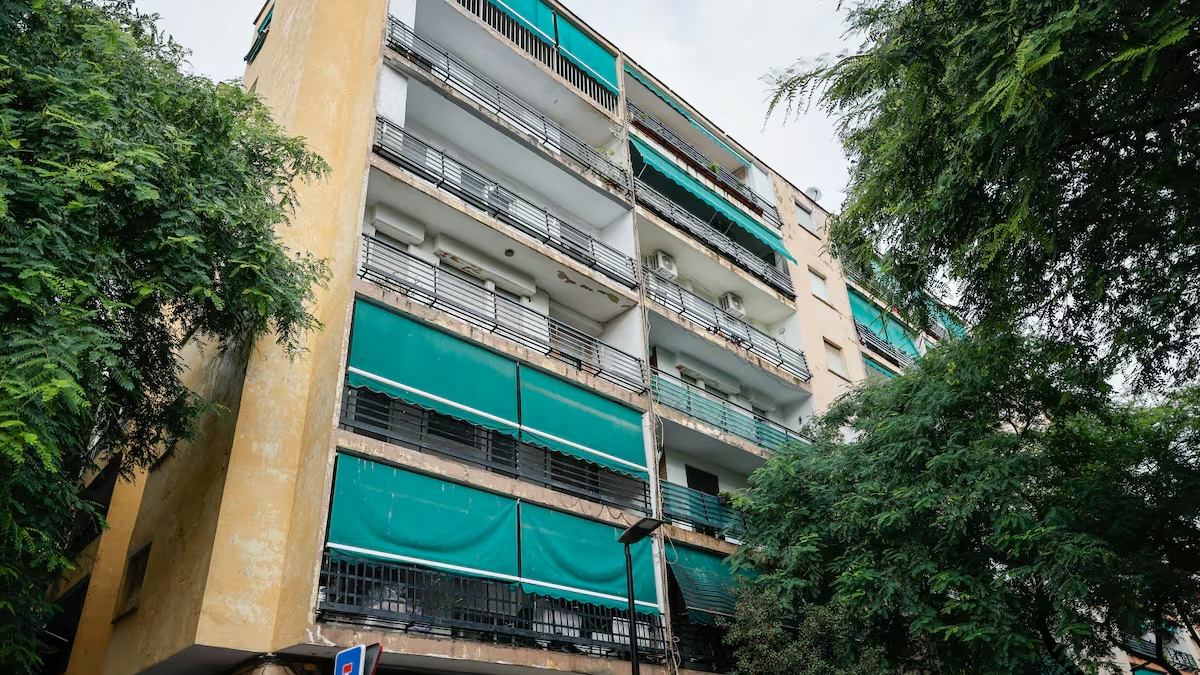Piaggio Ape
A legend leaves Italy: the “bee” flies to Asia
Copy the current link
Beetles and ducks are already a thing of the past, now the bee is also disappearing from the streets: Piaggio is stopping production of the Ape. But it lives on outside of Italy.
She is noisy. It rattles, it groans, it sways to itself. In other words, she can be quite a pain in the ass. Anyone who has ever tried to pass her on one of Italy’s narrow streets while on vacation can attest to this. And yet the heartbreak is great these days when it comes to saying goodbye to the Ape, Italy’s legendary three-wheeled van.
At the end of the year, the last model comes off the production line at the manufacturer Piaggio’s Tuscan headquarters after more than three quarters of a century. In the future, production will only take place in India – and only for Asia and Africa, no longer for Europe. This closes another chapter in car history. After the VW Beetle and the Citroën duck, it is now the Ape (in German: Bee).
The days when cars were called like animals will soon be a thing of the past. Although: Car is a big word. Actually, the Ape was just the further development of the Vespa (Wasp), the Italian motor scooter. The first Ape rolled off the assembly line in 1948 – two years after the first Vespa came out. Both were developed by company founder Enrico Piaggio and engineer Corradino D’Ascanio.
Vespa on three wheels with cabin and loading area
Essentially, the Ape was a three-wheeled scooter with a driver’s cab and a cargo area. The idea of installing a real steering wheel was soon abandoned. It remained with the handlebars with two handles: one on the left, one on the right. The comfort was zero. Two folding windows, no radio, no heating, an engine that initially only had 50 cubic meters. We couldn’t do more than 40 km/h.
That old already? These cars will become classic cars in 2025
The BMW Z3 James Bond even drove. BMW built the sleek roadster for around seven years before the Z4 came onto the market. Useless knowledge: The Z3 was the first BMW that was built exclusively outside of Germany (in Spartanburg/USA).
© Mark Boulton / Avalon / Imago Images
Back
Further
It was able to transport more than 200 kilograms of loads – ideal for work in the fields, between the olive trees or in the vineyards and also for bringing the goods to the market. The Ape was cheap, simple and hard to break. Nothing more was needed in the post-war years. Car historian Giorgio Sarti says: “Cars and trucks were too expensive, especially for small companies. The Ape was the perfect solution.”
She remained that way for decades. In some places the tin box was practically part of the house. It has been passed down through generations. Even a family could be accommodated in the Ape, albeit very closely together. The children then found space in the loading area. The minimum price is now more than 7,000 euros.
Piaggio Ape has been serving you for decades
Especially in the south of Italy, you can still see models from the 1960s and 1970s that do their job reliably. The Ape can be repaired with a reasonable level of manual skill. Again and again they were also available in special versions: the German Pope Benedict XVI. (1927-2022) once got an Apamobile all in white.
The Ape has now largely disappeared from large cities such as Rome or Milan – you can usually only find it in the neighborhood of markets. But now it is often used for advertising. And then there are the enthusiast models: very old, carefully maintained or souped-up versions.
“A piece of Italian history is dying”
The tuning scene in the Ape’s homeland is large: lowered, repainted or with powerful engines. Or as a mobile electric grill, an espresso bar and even an open-air cinema with a small screen. The South Tyrolean Sascha Müller has turned this into a business model. He says: “The bad thing is that a piece of Italian history is dying.”
The newspaper “La Repubblica” judged that the Ape fits perfectly with the Italian national character between individualism and a sense of family. “You feel comfortable in the driver’s cab alone, with goods or tools behind you. But you can also drive in it as a couple, closer together and with a touch of intimacy. Or, despite all the regulations and safety considerations, to celebrate with friends.”
Made in India – instead of in Italy
In the future, however, Piaggio will only build its tricycle in India – because the EU’s environmental regulations are too strict and probably also because the market in Europe is now too small. In the world’s most populous country with more than 1.4 billion inhabitants, the Ape is already being manufactured as an electric model and also with a natural gas drive. Today Italian vans are already competing with tuk-tuks.
In Italy they are currently consoling themselves with the fact that there are still a few hundred remaining items made in Italy being sold. And with the knowledge of the most legendary of all Italian small cars, the Fiat 500. The classic “Cinquecento” has not been built since 1975, but you can still sometimes see it on the streets today. This also brings a smile to the faces of tougher people.
DPA
tkr/Christoph Sator
Source: Stern
I’m a recent graduate of the University of Missouri with a degree in journalism. I started working as a news reporter for 24 Hours World about two years ago, and I’ve been writing articles ever since. My main focus is automotive news, but I’ve also written about politics, lifestyle, and entertainment.




